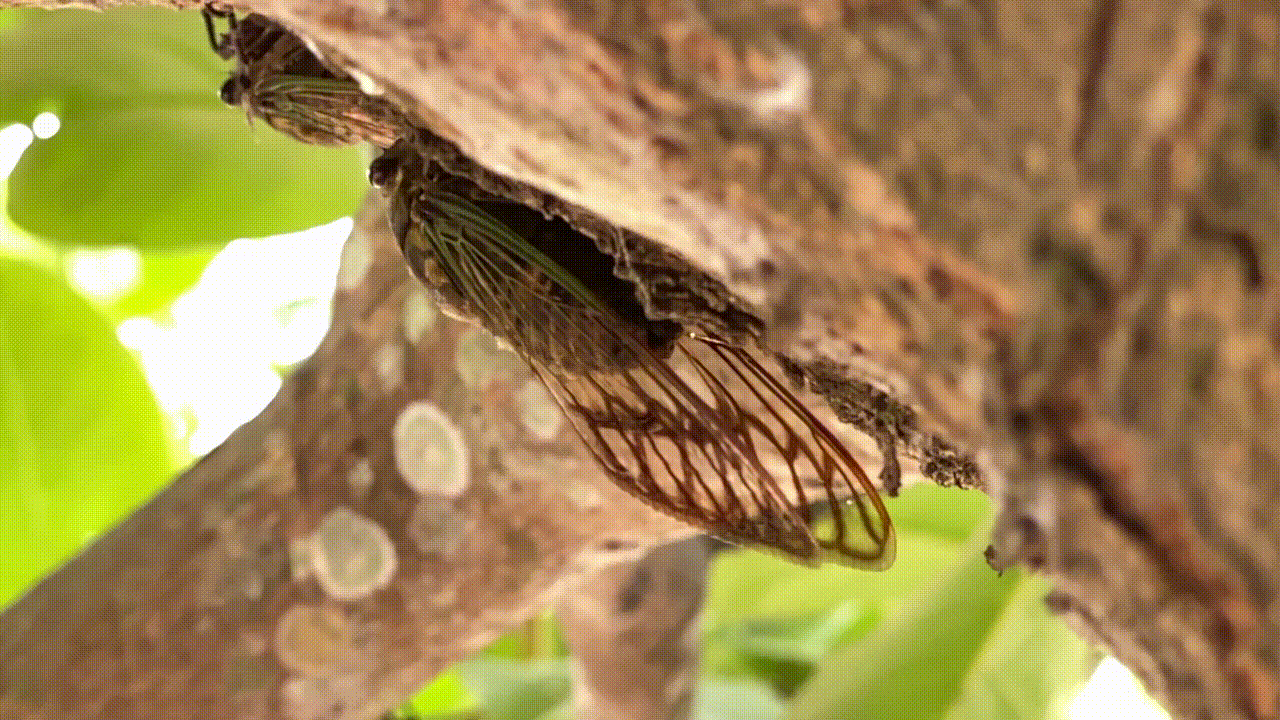Biology
Daddy Longlegs Have Four Extra, Hidden Eyes, Researchers Say
The new discovery could help scientists unravel the mystery of how the arachnids evolved across some 537 million years
Whales That Go Through Menopause Live Longer and May Help Care for Grandchildren
Alongside humans, five species of toothed whales are known to experience menopause. A new study suggests they evolved the trait to increase their lifespan
For Most Mammal Species, Males Actually Aren't Larger Than Females, Study Finds
New research upends a long-held theory that male mammals tend to be bigger than their female counterparts
Ten Wild Facts About Octopuses: They Have Three Hearts, Big Brains and Blue Blood
These bizarre creatures have been around for hundreds of millions of years, and for humans, they’ve inspired horror, admiration and culinary prestige
Don't Look Up: Cicadas Produce High-Speed Jets of Urine
The noisy, winged insects produce pee the same way that much larger animals do, according to a new study
Fossil Hunter Discovers Gigantic Crab in New Zealand—a New, Extinct Species
The massive creature is 8.8 million years old, and its modern descendants in Australia can grow to be the weight of a human toddler
Why Don’t Humans Have Tails? An Old Genetic Mutation Could Explain Why Monkeys, but Not Apes, Have the Extra Appendage
Scientists have pinpointed a genetic change that might have led the ancestors of humans to lose their tails
Why Do Poison Dart Frogs 'Tap Dance' With Their Toes? Research Sheds Light on Feeding Time Footwork
Scientists observed frogs tapping their toes up to 500 times per minute when prey was present, suggesting the behavior is related to predation
Single Orca Spotted Killing a Great White Shark for the First Time Ever
In less than two minutes, the marine mammal attacked a juvenile white shark and ripped out its liver in an encounter off the coast of South Africa last year
The World's Smallest Vertebrate Is a Tiny Brazilian Frog, Study Finds
Adult male Brazilian flea toads are just over 7 millimeters long on average, and females measure about 8.15 millimeters
Watch This Year's 'Dance Your PhD' Contest Winner, a Musical Celebration of Kangaroo Behavior
“Kangaroo Time” took home the competition’s overall prize, while interpretive dances on early life adversity, circadian rhythms and streambank erosion were also honored
This Tiny Fish Can Make Sounds That Rival an Airplane or an Elephant—Now, Scientists Know How
Transparent and just half an inch long, male Danionella cerebrum can make noises of more than 140 decibels
Scientists Discover How Some Whales Can Sing While Holding Their Breath Underwater
Baleen whales have evolved unique voice boxes essential for song, a new study finds—but these low-frequency vocalizations must compete with the noise of humans' ships
More Giant Pandas Are Coming to the U.S. in a New Loan From China
China plans to send a male and a female panda to the San Diego Zoo as early as this summer, and negotiations are underway for pandas' possible return to the National Zoo in Washington, D.C.
38,000 Sandhill Cranes Flock to Nebraska in a Record-Breaking Start to Spring Migration
Wildlife biologists counted the birds—likely lured by the region’s mild winter temperatures—during their first aerial survey of the season
The World's Oldest Wild Platypus Shocks Scientists at 24 Years of Age
The animal was tagged in 2000, when it was estimated to be about one year old, and re-discovered alive in the wild last year
A Female Stingray That Hasn't Had a Mate in Eight Years Is Mysteriously Pregnant. Is a Shark the Father?
Though the round stingray, named Charlotte, shares her aquarium tank with two male sharks, experts say it is impossible for a shark to impregnate a ray
See What Charles Darwin Kept in His 'Insanely Eclectic' Personal Library, Revealed for the First Time
On the English naturalist's 215th birthday, more than 9,000 titles from his expansive collection are now accessible online
Why Do Women Get More Autoimmune Diseases? Study of Mice Hints at Answers
Four in five people with an autoimmune disease are women. New research points to an RNA molecule involved in silencing one of their X chromosomes as a potential culprit
This Eight-Day Festival Celebrates One of Alaska's Weirdest Worms
Welcome to the Cordova Ice Worm Festival, a quirky local tradition honoring the mysterious creatures that live in glacial ice
Page 3 of 85
:focal(1024x575:1025x576)/https://tf-cmsv2-smithsonianmag-media.s3.amazonaws.com/filer_public/5d/f6/5df61598-eafd-4d89-9600-c43992cb1e01/phalangium_opilio_01_mk.jpg)
:focal(1929x1258:1930x1259)/https://tf-cmsv2-smithsonianmag-media.s3.amazonaws.com/filer_public/fc/b2/fcb2f4a1-dccc-4314-b739-e5e5b993f77b/gettyimages-547332154.jpg)
:focal(1957x1323:1958x1324)/https://tf-cmsv2-smithsonianmag-media.s3.amazonaws.com/filer_public/b3/7b/b37b38b2-5ed2-4669-8957-a961d4e7f606/gettyimages-474621363.jpg)
:focal(2007x1395:2008x1396)/https://tf-cmsv2-smithsonianmag-media.s3.amazonaws.com/filer_public/e8/88/e888c42a-fd8e-4146-ab56-f6b04cbf509a/octopus_tentacles.jpg)

:focal(710x469:711x470)/https://tf-cmsv2-smithsonianmag-media.s3.amazonaws.com/filer_public/c4/08/c40878e0-e98d-4124-b364-4911b87266ad/fossil-unearthed-in-ne.jpg)
:focal(1826x1200:1827x1201)/https://tf-cmsv2-smithsonianmag-media.s3.amazonaws.com/filer_public/b5/06/b506c654-bc56-444d-908c-109fe86fd57c/35157112900_c4830659a1_o.jpg)
:focal(2144x1429:2145x1430)/https://tf-cmsv2-smithsonianmag-media.s3.amazonaws.com/filer_public/60/15/6015c016-7397-4805-82d3-1c60d933f17c/9467039017_3ac79d7c71_o.jpg)
:focal(2550x1700:2551x1701)/https://tf-cmsv2-smithsonianmag-media.s3.amazonaws.com/filer_public/2a/0b/2a0b6c69-c2df-417e-b474-dab29dcc8fcd/gettyimages-639204074.jpg)
:focal(992x727:993x728)/https://tf-cmsv2-smithsonianmag-media.s3.amazonaws.com/filer_public/02/76/0276be0a-1b81-4c5a-91c2-223f2275e0a3/zsc12654-fig-0001-m.jpg)
:focal(608x371:609x372)/https://tf-cmsv2-smithsonianmag-media.s3.amazonaws.com/filer_public/fe/ce/fece73a9-b759-4dfe-93cd-3397925041aa/danceyourphd.jpg)
:focal(1235x584:1236x585)/https://tf-cmsv2-smithsonianmag-media.s3.amazonaws.com/filer_public/c5/cf/c5cf13b1-51fb-42a0-9454-dc43200b9ad6/12-mm-fish-produces-14.jpg)
:focal(2144x1429:2145x1430)/https://tf-cmsv2-smithsonianmag-media.s3.amazonaws.com/filer_public/6d/33/6d331005-7eae-4894-ae5a-bb04025aebce/gettyimages-481580713.jpg)
:focal(1520x1013:1521x1014)/https://tf-cmsv2-smithsonianmag-media.s3.amazonaws.com/filer_public/26/10/26108b49-7ac2-404f-ba63-72f63f0387f8/20050224-0124ab-newsroom.png)
:focal(2048x1365:2049x1366)/https://tf-cmsv2-smithsonianmag-media.s3.amazonaws.com/filer_public/ec/ef/ecefd7ba-c0e2-40c0-81b3-d83807cdda07/7084576035_d0e20a7bec_4k.jpg)
:focal(2736x1824:2737x1825)/https://tf-cmsv2-smithsonianmag-media.s3.amazonaws.com/filer_public/69/78/6978cf35-198d-41c3-b00c-ba4bdeedf315/gettyimages-968383944.jpg)
:focal(1008x758:1009x759)/https://tf-cmsv2-smithsonianmag-media.s3.amazonaws.com/filer_public/56/a0/56a02be7-621b-472d-8fa5-78f0a14d924a/426316488_692489373063247_9012529199041513450_n.jpg)
:focal(573x426:574x427)/https://tf-cmsv2-smithsonianmag-media.s3.amazonaws.com/filer_public/11/0a/110a8858-6904-4e4d-afc1-0faa7ec74fde/1882_haig_darwins_a205_001.jpg)
:focal(2126x1417:2127x1418)/https://tf-cmsv2-smithsonianmag-media.s3.amazonaws.com/filer_public/4f/88/4f888a3e-98ee-4f95-aefa-473c4ac6d721/gettyimages-614082898.jpg)
:focal(2016x1517:2017x1518)/https://tf-cmsv2-smithsonianmag-media.s3.amazonaws.com/filer_public/95/08/9508d230-a5ed-4a5d-a3ce-53d0017442e1/scotthotaling_6_copy.jpg)